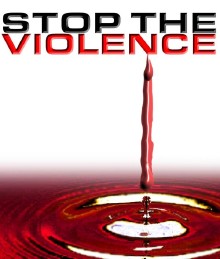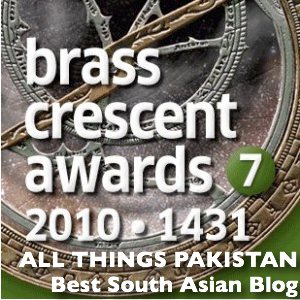Adil Najam
 For nearly a week now Pakistan has watched, in stunned horror, yet another episode of vigilante justice. This one unfolding on our television screens in all its gory detail. The savage murder of two young brothers – Mughees and Muneeb – in Sialkot as people, including police, look on has rightly incensed our sensibilities.
For nearly a week now Pakistan has watched, in stunned horror, yet another episode of vigilante justice. This one unfolding on our television screens in all its gory detail. The savage murder of two young brothers – Mughees and Muneeb – in Sialkot as people, including police, look on has rightly incensed our sensibilities.
The news itself is clearly horrific, horrible, and horrifying. But the newness in the news is that this time people, including the media and official authorities, are moved enough to unleash an outcry. That is new. And that is news.
What happened in Sialkot was ghastly in its detail, inhuman in its execution, and numbing in the reaction of those who stood by to just view (and film) it. But even if the magnitude was off all scale, the action itself – that is, vigilante justice – was not new: More than what happened in Sialkot, what is new is the larger national reaction to what happened at Sialkot.
The media has begun asking some important questions (even though parts of the media still seems mostly interested in the voyeuristic elements of violence in action). Government officials, starting with the Sialkot Administrator but later also the police chief and the provincial and national authorities, including the Supreme Court, have moved not just to condemn but to take action. More action and better implementation is required, but public outcry has clearly worked in this case to move the authorities into action.
All of this is exactly how functioning polities should deal with incidents of extremism and vigilantelism. But mostly importantly, all of this is news precisely because this is not how things like this have often been dealt with in the past. The opportunity in this truly horrible event is to turn this into a moment of true introspection about ourselves and the attitudes about violence of the many in society, rather than another voyeuristic titillation about the brutality of the few.
Supreme court or not, the jury is still out on whether we will be able to do so or not.
By now everyone knows the details and many have seen the gut-wrenching video of the savagery unfolding in front of their eyes. The video ghastly indeed; not just because of what is being done to the two young brothers but also what is not being done by all the people watching it. Like tamashbeen they watch the orgy of violence in front of them seemingly not moved; indeed sometimes they seem to be cheering on; flashes, cameras, mobile phones keep flashing on the screen as if these were spectators at a sporting event; and these are ordinary people: including the police, traders going about their regular business, ordinary citizens, and even children. The video sends a cold shiver up ones spine. As it should.
We will not put ourselves or you through the goriness of this spectacle again. But let us, instead, remember anotehr very similar brutality when we – and by ‘we’, I do not mean the government or authorities, I mean ‘we’: as in me and you – were not similarly incensed, even though we should have been. Indeed, when too many of ‘us’ seemed to be cheering on those taking the law into their own hands:
- Please revisit the May 2008 post at ATP titled “Vigilante Justice: Horrible, Horrifying, Horrendous.”
- The post is from Karachi: two guys commit a robbery, people from the neighborhood runs after them, catches them, and then sets them on fire (alert: the post has some horrible pictures of the robbers on fire; reader discretion advised).
- More importantly than the post, please read the comments. See how many readers even of this blog actually think what happened there was ‘OK’ and maybe even a good thing.
The point here is an unpopular one to make. But is an important one. You cannot create a society where you encourage and accept some forms of violence, and then act all surprised and outraged when that same violence gets out of hand. The Violence we condone will breed the violence we condemn.
Let me be clear. I have no sympathy for over-dramatic analyses which suggest that the murderers of Sialkot represent the entirety of Pakistan’s 175 million people. They do not. They are the exception and they are the extreme. Exceptions and extremes exist in every society.
But the people who are watching on as the murders happen cannot be exceptions and extremes. They are, indeed, the faces of everyday Pakistan. And that, I think, is what is sending the cold shiver down our spine. The validation of violence that we see in their faces, is a validation of violence we have seen too many times ourselves. No society must ever be judged by the extreme and the fanatic amongst it. But every society should be held responsible for how it deals with and reacts to those extreme and fanatic acts. It is entirely right, therefore, to be asking some very tough questions of ourselves and our own relationship to the violence around us.
It is indeed solace that there is outrage and widespread outrage. Maybe because it was on video the reaction was wall-to-wall and swift. Maybe, and one hopes this is true, people have also begun to speak up more against obvious injustices – as we saw, for example, in the recent Prem Chand case. But it is also true, and maybe even more true, that the voyeuristic element still dominates the discourse. Most true of all is the fact that those who were at the scene seemed not much outraged at all. The outrage of the rest of us, rightly placed as it may be, comes way too late to be of much use to Mughees and Muneeb.
On this blog we have had to write too often about how society is slipping into an increasing acceptance, even justification, of violence. Syed Abbas Raza recently wrote about the shrinking civility in society and we actually declared 2007 as a year of ‘angst and anger.’ Indeed, we struggle with the tantrums of anger in our comment pages every day. Too many people seem too angry, at too many things, too much of the time. Angry enough to attack each other’s integrity. It is not enough to say that we disagree with someone, it seems necessary to inflict pain on those we disagree with – if not physical violence, then the emotional violence of words purposefully constructed to hurt. That, of course, is a small matter. But at the base of this small matter is a big big problem. The problem of anger in society. And anger when mixed with a validation of violence and a disregard, disrespect and distrust of all institutions of state, becomes a really deadly cocktail.
Maybe as we angrily express outrage over what happened in Sialkot – as we rightly should – we should also take a moment to think about how we – and, again, by ‘we’, I do not mean the government or authorities, I mean ‘we’: as in me and you – have become such a violence prone society: violence in the name of religious difference, violence in the name of politics, violence in the name of ideology, and violence even in the name of justice!



















































@Watan Aziz
yaara…khuda ka shukar ada karein kay Allama 1939 mein nikal liya….warna shikwa ka doosra edition chap jata ya Faiz ki Shab gazeeda sahar woh likh detay…..:)
@Muse
A dirty mind like yous would certainly welcome dirtiness and even justify it.
I had acually wanted to point to the political fall out of the tragic event whereby two different constituencies got involved in this case, one of MLN (Khaja Asif’s) and the other of PPP (Ms Firdous’s), both apparently siding with their respective voters.
Or perhaps we saw different clips. I was referring to the one shown, uncensered perhaps, on YouTube with Hindi
titles, indicating its Indian origin.
Have peace.
readinglord:
It was not the mother clasping Shahbaz Sharif’s hand but its the other way round.
In the clip,Shahbaz Sharif while expressing his sympathy and solidarity with the family,just touched the right hand of the bereaved mother for a moment and then let go.
Later we can see,the mother keeping her hand away from the right arm rest of the chair for the rest of the footage.She is a dignified woman and she knows how to keep her dignity.She has already gone through a horrible tragedy.
Do not try to spread your filthy thoughts in this forum.The clip you say and the one I saw can’t be different.
I saw the footage of the event on YouTube, which showed Nawaz and Shehbaz Sharifain, sitting on either side of the mother of the victims of the lynching. What were they talking was not audible but one gesture, the mother slapping on the hand of Shehbaz and clasping it, looked intriguing to me, not in keeping with the mood of the time.
Can any body throw light on it?
DPO Chauhan Granted Bail:
The Lahore High Court on Monday granted bail to Sialkot DPO (district police officer) Waqar Ali Chauhan who is accused of having done nothing to stop the lynching of two teenage brothers Hafiz Mueez Butt and Muneeb Butt by a mob.
Chohan was said to have been present at the scene on Sunday August 15 where Butt brothers were beaten to death and then their bodies hanged upside down in front of the 1122 rescue office.
Interestingly, for some unknown reasons, Chohan’s name has not been included in the FIR that was lodged on the lynching incident.
Chohan has denied he was present at the time the two brothers were lynched, and has alleged that the video footage of the incident was fabricated. He was talking to Dawn outside the courtroom on Monday.